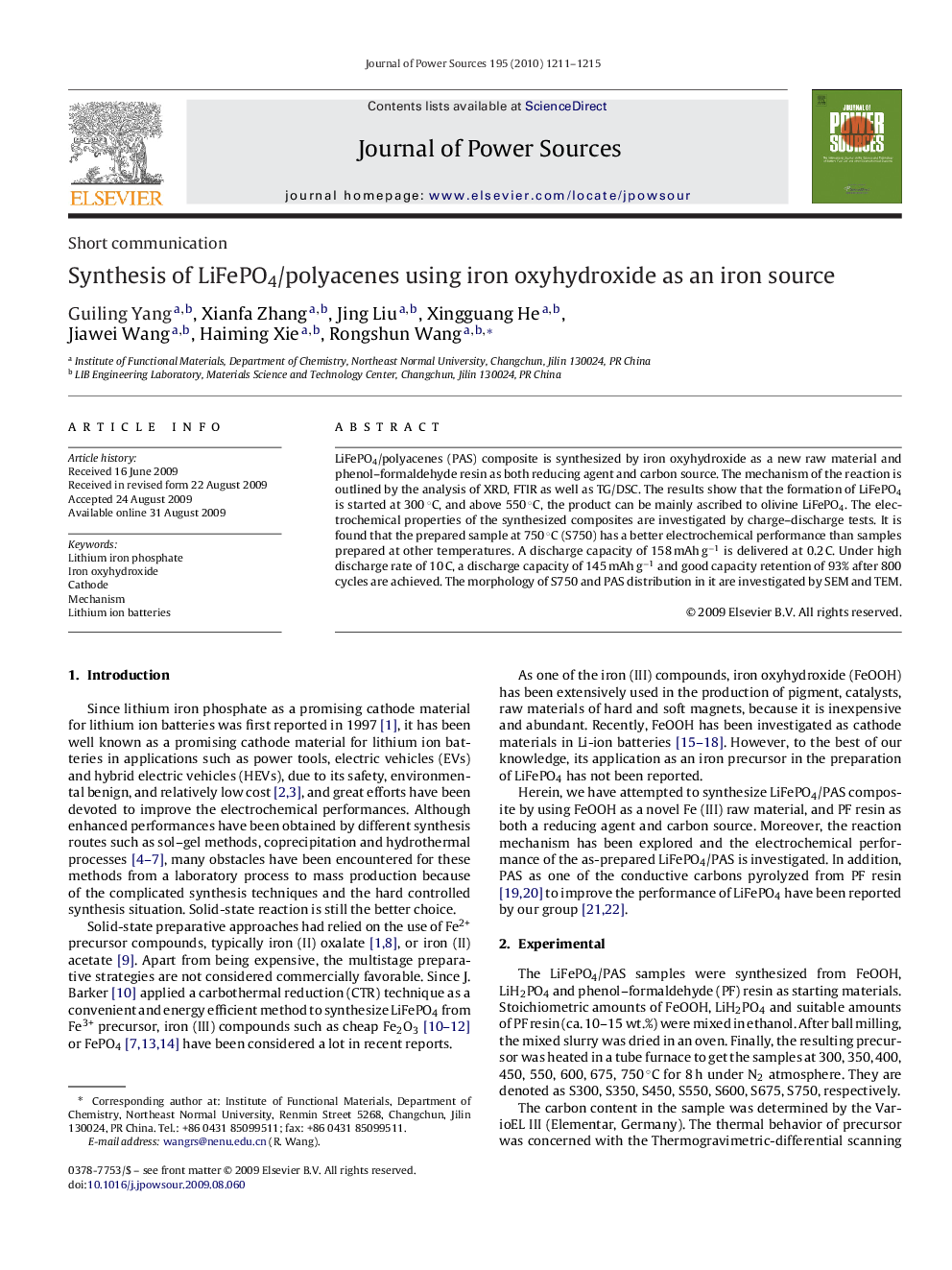| Article ID | Journal | Published Year | Pages | File Type |
|---|---|---|---|---|
| 1285123 | Journal of Power Sources | 2010 | 5 Pages |
LiFePO4/polyacenes (PAS) composite is synthesized by iron oxyhydroxide as a new raw material and phenol–formaldehyde resin as both reducing agent and carbon source. The mechanism of the reaction is outlined by the analysis of XRD, FTIR as well as TG/DSC. The results show that the formation of LiFePO4 is started at 300 °C, and above 550 °C, the product can be mainly ascribed to olivine LiFePO4. The electrochemical properties of the synthesized composites are investigated by charge–discharge tests. It is found that the prepared sample at 750 °C (S750) has a better electrochemical performance than samples prepared at other temperatures. A discharge capacity of 158 mAh g−1 is delivered at 0.2 C. Under high discharge rate of 10 C, a discharge capacity of 145 mAh g−1 and good capacity retention of 93% after 800 cycles are achieved. The morphology of S750 and PAS distribution in it are investigated by SEM and TEM.
